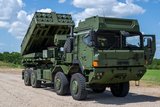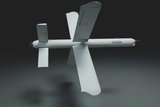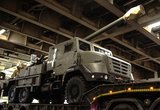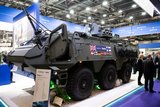Vehicle-based laser weapons inch toward reality
Raytheon will conduct work to develop a vehicle-based laser weapon device under an $11 million contract announced on 13 August. The work will be carried out as part of the Office of Naval Research’s Ground Based Air Defense (GBAD) Directed Energy On-the-Move Future Naval Capabilities programme.
The contract will see Raytheon develop and demonstrate a short-range laser device capable of being mounted on a Humvee that can defeat low-flying threats such as unmanned aerial vehicles (UAVs). With a minimum power output of 25kW, the laser weapon system will be packaged to meet the size, weight and power requirements of the US Marine Corps.
The work will draw on Raytheon’s planar waveguide (PWG) technology, which is capable of generating sufficient power to effectively engage small aircraft.
Bill Hart, vice president, Raytheon Space Systems, said: ‘Raytheon's laser solution generates high power output in a small, light-weight rugged package ideally suited for mobile platforms.
‘Our PWG laser architecture is scalable: we can achieve increasingly higher power levels with the same compact design we're using for GBAD. Raytheon is paving the way for fielded directed energy weapon systems in the very near future with the demonstration of a marine Humvee-based high energy laser.’
Related Equipment in Defence Insight
More from Land Warfare
-
![Hungary set to begin using Hero 400 loitering munitions]()
Hungary set to begin using Hero 400 loitering munitions
Developed by Israel's Uvision and with systems being sold in the thousands to multiple European NATO countries and the US, the Hero family of loitering systems is also in production in the US and Italy, the latter through Rheinmetall.
-
![Lithuanian 1st Division to achieve initial operating capability in 2026]()
Lithuanian 1st Division to achieve initial operating capability in 2026
Lithuania is one of the countries stepping up its defences in the face of the war in Ukraine with a particular focus on its neighbour and Russian ally Belarus, which has been making incursions into Lithuania’s airspace with balloons and drones.
-
Medium knocked out of British Army LMP, with CAVS as heavyweight champion
As the British Army seeks to modernise and consolidate its diverse vehicle fleet, yet another change in direction is underway.























